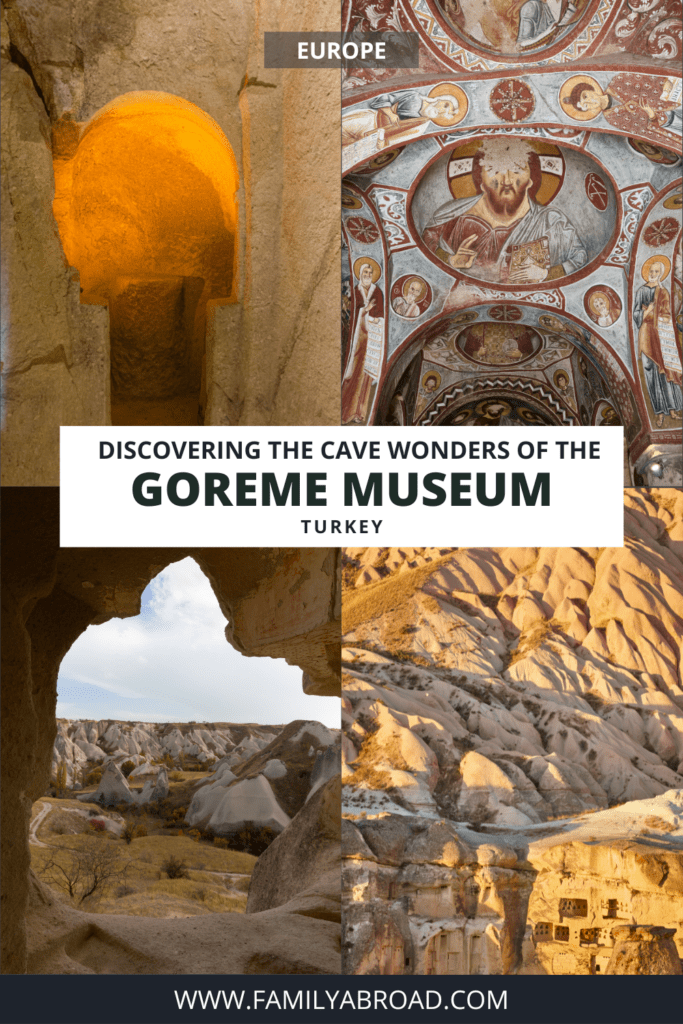Our family recently had the pleasure of visiting the Goreme Open Air Museum in Cappadocia, Turkey, and we were blown away by the beauty and history of the area. The museum is a UNESCO World Heritage site, and it is home to an extensive complex of rock-carved churches, chapels, monasteries, and dwellings that date back to the Byzantine era, which was between the 10th and 12th centuries.
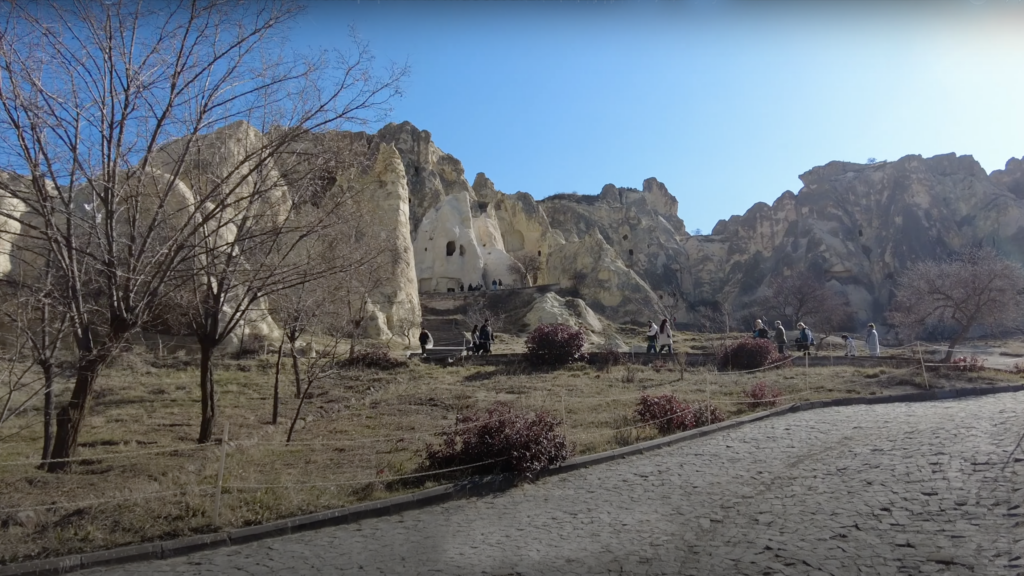 Inside the Goreme Open Air Museum
Inside the Goreme Open Air Museum
The Goreme Open Air Museum is considered to be one of the most important examples of Byzantine art and architecture in the world. The churches and chapels were carved into the soft tuff rock that is abundant in the area and feature beautiful frescoes and wall paintings that depict scenes from the Bible and the lives of the saints.
The area was a popular place for monks and Christians seeking refuge and solitude, and they built their monasteries and churches in the rock formations, which provided a natural defense against invaders. The museum has been carefully preserved and restored over the years, and it continues to be an important religious and cultural site in Turkey, attracting visitors from all over the world.
As we arrived at the entrance of the Goreme Open Air Museum, we couldn’t help but notice the local shops that surrounded it. We decided to take a quick look around before heading in, and the colorful displays of traditional Turkish clothing, intricate pottery, and souvenirs immediately caught our attention.
 Local shops at the entrance of the Goreme Open Air Museum selling colorful souvenirs
Local shops at the entrance of the Goreme Open Air Museum selling colorful souvenirs
A few minutes after, we came across a small group of camels, each adorned with colorful blankets and saddles. Our 10-year-old daughter, Bethany, begged us to let her ride them. We couldn’t resist the opportunity to make her day. After negotiating a fair price with the camel owners, they helped Bethany and Nathan climb up onto the camels’ backs, where they sat comfortably as the camels slowly made their way around the area.
 Nathan, our teenager, riding on a camel
Nathan, our teenager, riding on a camel
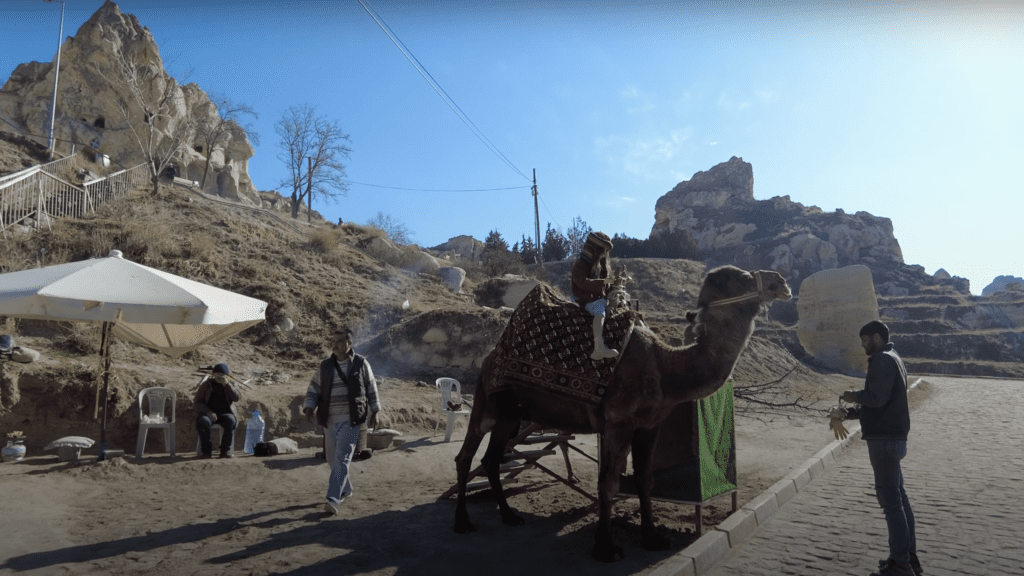 Bethany, our 10-year-old, on a camel
Bethany, our 10-year-old, on a camel
Then we joined the queue to buy our tickets, which was not long at all. While we waited, we took in the view of the stunning view of the surrounding rock formations.
The standard ticket cost us around 150 Turkish Lira, but we decided to splurge and add an audio guide for an additional 65 Lira, which cost 215 Lira in total. With this, we could hear expert commentary on the exhibits and get more in-depth information about the history and culture of the artifacts.
Our first stop was St. Basil’s Church, and entering it was like stepping into another world. The ceiling is domed and the walls are covered with elaborate frescoes that depict scenes from the life of Christ and other biblical figures. One of the most striking features of St. Basil’s Church is the fresco of the Last Judgment that covers the entire western wall.
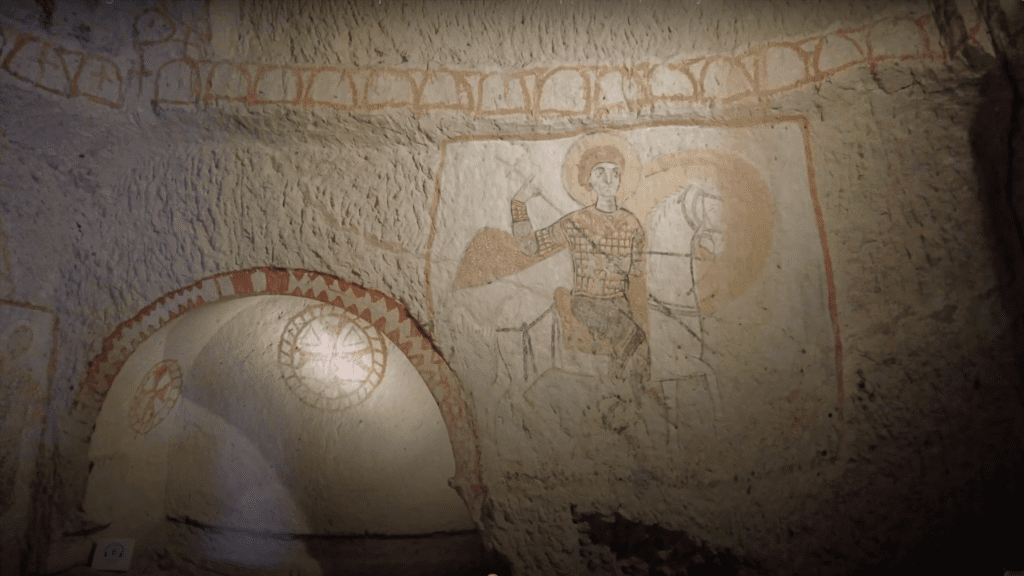 A fresco inside St. Basil’s Church
A fresco inside St. Basil’s Church
The next stop was the Apple Church. As the name suggests, it is named after the apple-shaped dome that adorns its roof. The interior is relatively small, with a single nave and a series of shallow apses carved into the rock walls. Despite its small size, however, the Apple Church is home to some of the most striking examples of Byzantine art and architecture in the region. The most striking feature of the Apple Church, however, is the dome itself, which sets it apart from the rest of the churches. The apple-shaped roof is a masterpiece of engineering, with its complex curvature and smooth, unbroken surface.
We then visited the Snake Church, also known as Yilanli Kilise in Turkish. The church is so named due to the intricate frescoes that cover its walls, which depict a variety of snakes intertwined with vines and other vegetation. The frescoes within the Snake Church are a testament to the deep spiritual beliefs of the people who worshiped there. Along with the intricate snake designs, the walls are covered with images of saints, angels, and biblical scenes.
Next, we explored the Buckle Church, which dates back to the 10th century and is believed to have been used as a monastery and community center. It consists of several chambers, including a large central nave, a kitchen, and a dining hall.
 Edith walking up to Buckle Church
Edith walking up to Buckle Church
One of the most striking features of the Buckle Church is the kitchen and dining hall, which are located in a separate chamber from the main nave. The kitchen is carved into the rock and features a large hearth, as well as shelves and storage areas for food and cooking supplies.
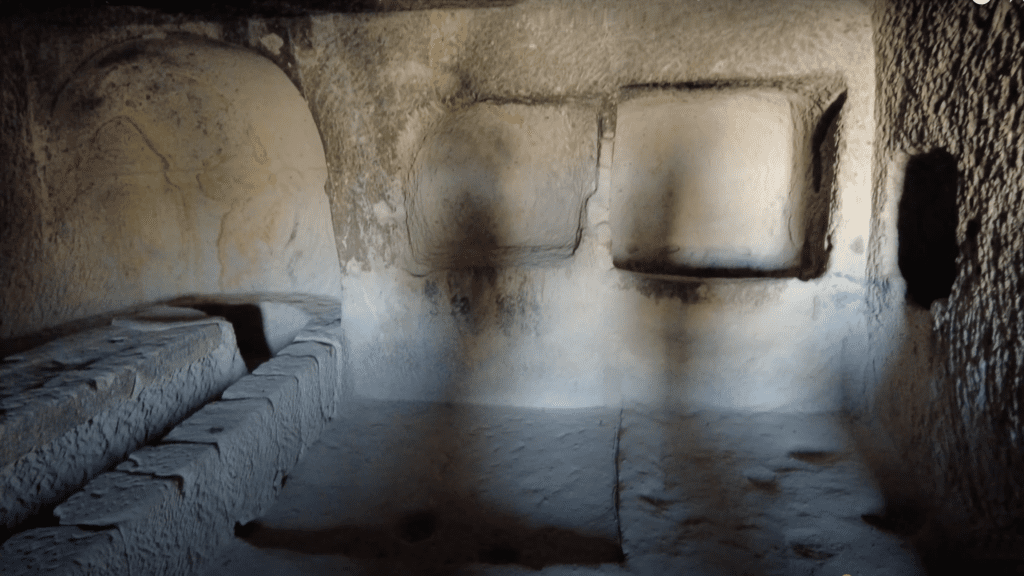 A dining hall inside Buckle Church, with “shelves” carved into the rocks to store supplies
A dining hall inside Buckle Church, with “shelves” carved into the rocks to store supplies
The adjacent dining hall is a spacious room with a low ceiling and seating niches carved into the rock walls. The frescoes in the dining hall depict scenes of feasting and celebration, including images of the Last Supper and other biblical scenes.
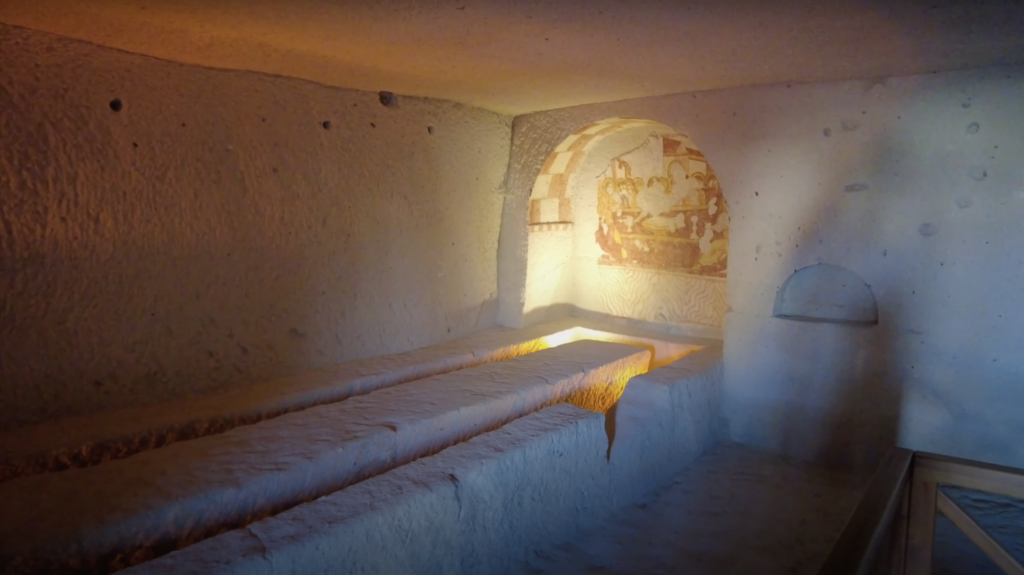 Another dining hall in Buckle Church that featured a fresco depiction of the Last Supper
Another dining hall in Buckle Church that featured a fresco depiction of the Last Supper
Then we visited the Dark Church, also known as Karanlık Kilise in Turkish. As its name suggests, the church is dimly lit, with very little natural light filtering through its narrow windows. The church is famous for its incredibly well-preserved frescoes, which cover almost every inch of its walls and ceilings.
However, visitors are not allowed to take photos or videos inside the Dark Church. This is because the flash from cameras can damage the delicate frescoes, which have already been subject to centuries of wear and tear. The restrictions on photography help to ensure the preservation of the artwork for future generations to enjoy.
Entering the Dark Church requires an additional fee of 50 Lira, but the experience of seeing the intricate frescoes within is worth every penny. In addition to the impressive frescoes, visitors to the Dark Church are treated to fantastic views of the surrounding landscape. From the top of the church, visitors can look out over the unique rock formations known as fairy chimneys that dot the Cappadocian landscape.
 The view of the rock formations from the entrance to the Dark Church
The view of the rock formations from the entrance to the Dark Church
Lastly, we went to the Sandal Church, which gets its name from the footprints depicted in some of its frescoes, which resemble the shape of sandals. In addition to the artwork, the Sandal Church also features unique architectural elements, such as a central nave with side aisles, and a series of small chapels.
 Some of the many intricate artworks inside Sandal Church
Some of the many intricate artworks inside Sandal Church
Overall, our trip to the Goreme Open Air Museum was a fantastic experience. From the moment we arrived, we were awestruck by the unique beauty of the Cappadocian landscape. As we explored the museum, we were struck by the incredible detail and beauty of the frescoes that adorned the walls and ceilings of the churches and chapels in the museum. From the vibrant colors of the Sandal Church to the intricate detail of the Dark Church, each space was a feast for the eyes and a testament to the skill and artistry of the past.
Beyond the art and architecture, we were also deeply impressed by the natural beauty of the area, with its breathtaking views of the surrounding landscape and unique rock formations. The history and beauty of the area were truly awe-inspiring, and we highly recommend it to anyone visiting Cappadocia.
WATCH THE FULL VIDEO
Like this post? Pin it on Pinterest!
